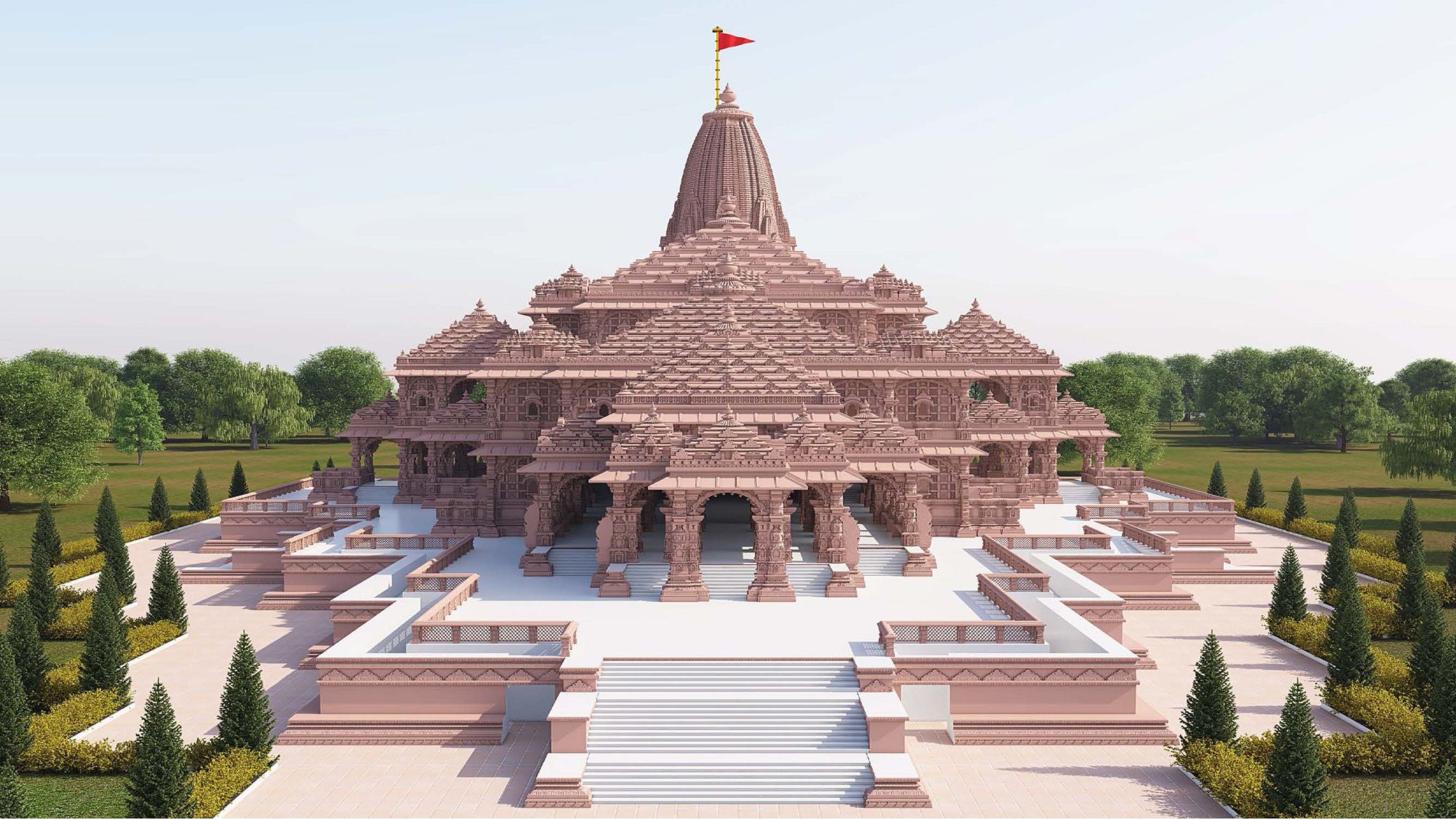In anticipation of the highly anticipated 'Pran Pratistha' ceremony at the Ram Mandir in Ayodhya, the city has been enveloped in an unprecedented level of security, resembling a fortress. Anti-bomb squads, snipers, and dog squads have been strategically deployed, with the National Disaster Response Force (NDRF) establishing a contingency camp near the shrine to ensure swift response capabilities, as reported by news agency ANI.
The 'Pran Pratistha' ceremony, set to commence at 12:20 pm, is expected to conclude by 1 pm. Prime Minister Narendra Modi is slated to address a gathering of over 7,000 individuals, including seers and eminent personalities, at the venue. With lakhs of people anticipated to witness the event live on television and various online platforms, several states have declared a holiday, and the Centre has announced a half-day. The meticulous preparations for this grand ceremony began with pre-Pran Pratistha rituals on January 16, scheduled to conclude today. The unveiling of the newly built 51-inch Ram Lalla idol, crafted by Arun Yogiraj from Mysuru, took place on January 18, with its first image released on Friday.
As the city anticipates the mega inauguration, security measures have been significantly tightened. Uttar Pradesh DG (Law and Order), Prashant Kumar, highlighted the deployment of 13,000 forces, complemented by the integration of artificial intelligence-powered CCTV systems across Ayodhya. A network of 10,000 cameras has been strategically placed for 24x7 monitoring, augmented by anti-drone technology. National Security Guard snipers have been positioned to ensure multi-layered security, while Rapid Action Force (RPF) personnel are stationed at key locations, including Lata Mangeshkar Chowk. Boat patrols on the Sarayu River, anti-bomb squads, and dog squads have been deployed at Ayodhya's newly inaugurated Maharishi Valmiki International Airport, as the influx of devotees and dignitaries escalates for the 'Pran Pratistha.'
Traffic Management and Parking Logistics
To manage the anticipated influx of visitors, traffic diversions have been imposed in Ayodhya, with vehicle entry permissions effective from tomorrow onwards. Movable barriers with barbed wire have been strategically placed at crossroads, aiding traffic regulation, especially during VVIP movements. The Uttar Pradesh government has meticulously arranged parking facilities at 51 designated locations in Ayodhya, accommodating 22,825 vehicles. These parking spots are under constant drone surveillance and are conveniently marked on Google Maps to facilitate visitors. ADG Traffic, BD Paulson, outlined the allocation of parking spaces for guests attending the consecration ceremony, ranging from Rampath and Bhakti Path Marg to Dharma Path Marg and Parikrama Marg. Special provisions have been made for VVIPs and VIPs, ensuring the smooth flow of more than 10,000 vehicles. Security measures extend to the national highway 27, where eight parking spaces are reserved for the police force, capable of accommodating over 2,000 police vehicles. Stringent measures have been implemented to safeguard these parking facilities.
Emergency Preparedness and Health Measures
With a focus on emergency preparedness, multiple NDRF teams trained to handle various crises, including chemical, biological, radiological, and nuclear incidents, have been deployed. The Ayodhya administration has also decided to address health emergencies, considering the severe cold wave gripping North India. Beds have been reserved at city-based and district hospitals, with specialists from AIIMS providing focused emergency response training to doctors at healthcare institutions.
Ayodhya and Ram Mandir's Grandeur
The city has been adorned in celebration of the Ram Mandir inauguration. The temple is embellished with "rich stocks" of flowers and special lights, creating a mesmerizing spectacle. Streetlights on flyovers feature artworks depicting Lord Ram, including cutouts of a bow and arrow, and ornamental lamp posts carrying designs themed on the traditional 'Ramanandi tilak.' Slogans such as 'Ram fir lautenge,' 'Virajenge Shri Ram,' and 'Taiyar hai Ayodhya dham' echo across posters and hoardings spread throughout the city. Various verses from the epic 'Ramayana' have been printed on posters at prominent spots like Sarayu riverbank, Lata Mangeshkar Chowk, and Ram Marg. The Sarayu riverbanks have been festively decorated. Cultural programs celebrating Lord Ram are thriving across the city, adding to the festive atmosphere.
Gifts from Across the Globe
Gifts from various places have been pouring into Ayodhya for the Ram Mandir inauguration, symbolizing a global celebration. These include bangles featuring Lord Ram images, fifty-six varieties of 'petha' (sweet), a 500-kg iron-copper 'nagada,' and the 'Onavillu' bow. Essential items such as rice, ladoos, and vegetables needed for the 'Pran Pratistha' have been generously contributed. Special perfumes from Kannauj, 500 kg of 'kumkum' leaves from Amravati, grains from a Ram temple in Delhi, flowers from Bhopal, and papers with Lord Ram's name written 4.31 crore times from Madhya Pradesh's Chhindwara are among the diverse gifts received. Over 3,000 gifts from Sita's birthplace in Nepal's Janakpur have reached Ayodhya, while a Sri Lankan delegation brought a special gift from the Ashok Vatika, a garden mentioned in the epic 'Ramayana.'
Ram temples trust general secretary Champat Rai shared insights into the event logistics, noting that entry into the venue will be from the east side, with exit from the south. The entire temple superstructure is planned to be three-storeyed, requiring visitors to climb thirty-two steps from the eastern side to reach the main point of the Ram Mandir. As Ayodhya prepares for this historic moment, the convergence of elaborate security measures, grandeur, and global contributions sets the stage for an event of unparalleled significance.






